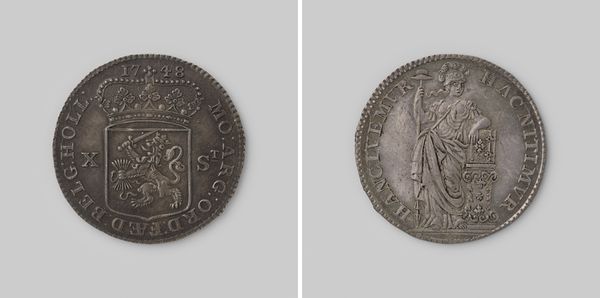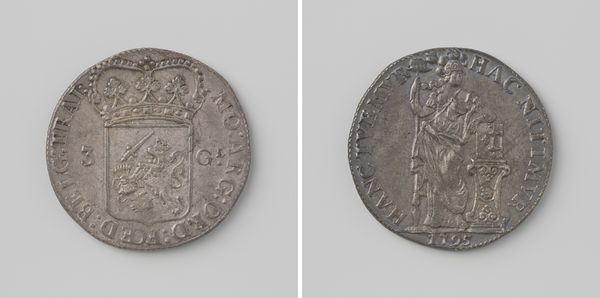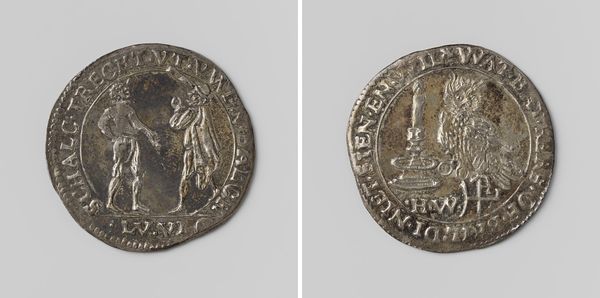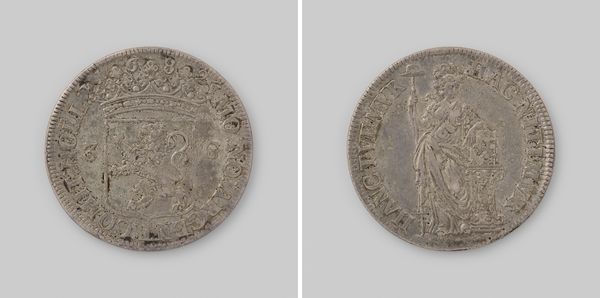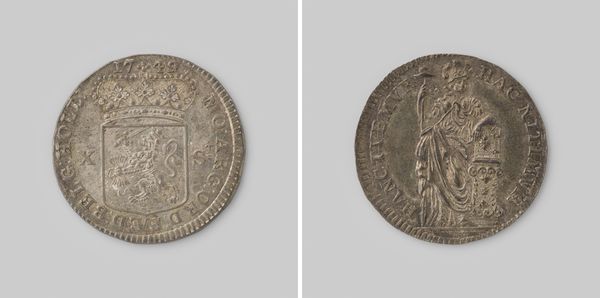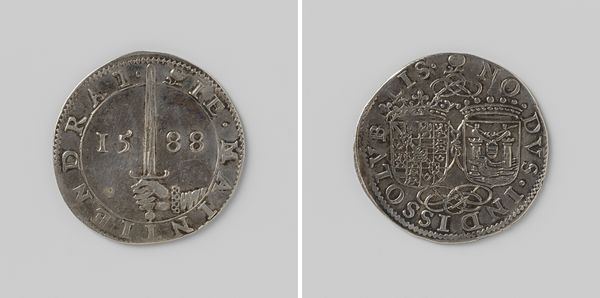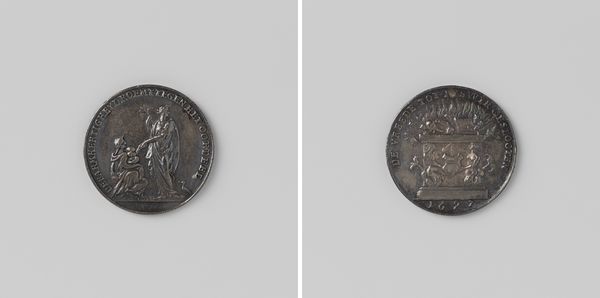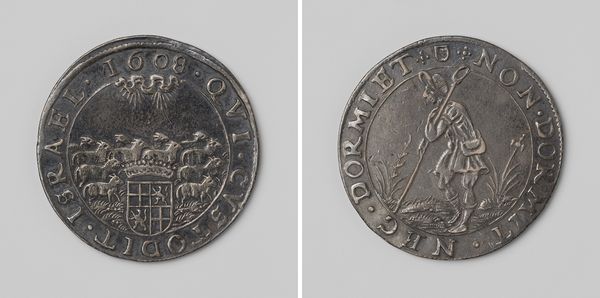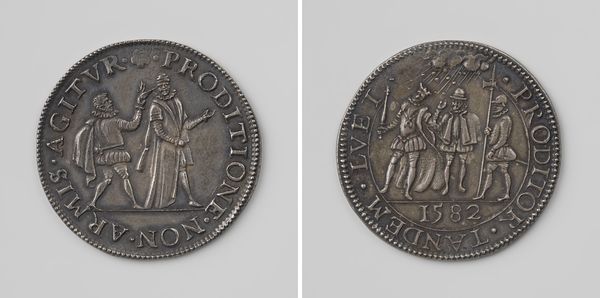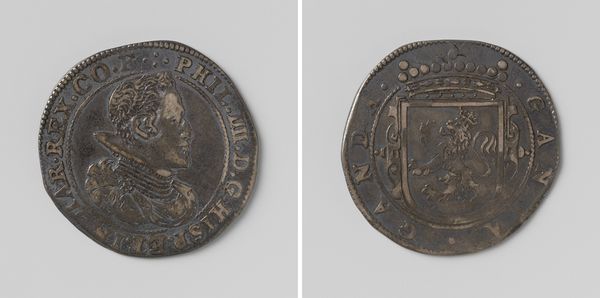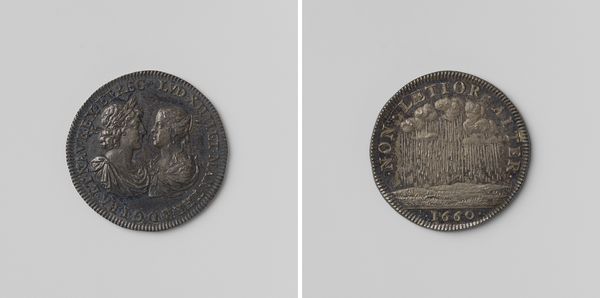
Dimensions: diameter 2.9 cm, weight 5.27 gr
Copyright: Rijks Museum: Open Domain
Curator: Let's turn our attention to this 1751 Dutch coin, specifically, a "Hollandse Halve Gulden" – a half guilder – issued by the province of Holland. It's an artifact rich in symbolic representation. What's your initial reaction? Editor: The first thing that strikes me is its physical presence, despite being small. It's weathered, it has a history you can almost feel, and it speaks to power structures and the economic realities of the time. There is an aura about its being handled. Curator: Indeed. The coin's design on one side features the crowned arms of Holland. Look closely; the lion rampant wielding a sword emerges from the escutcheon. This is potent symbolism connected to cultural identity of Holland at the time. The lion and the crown reference heraldic tradition and power structures, acting as markers of identity, loyalty, and a certain claim to dominance. Editor: Absolutely. We see it over and over. And the opposite side has the standing figure of the "Dutch Virgin" – often seen as a symbol of liberty, holding a spear topped with a hat, resting by an altar that’s carved with more imagery of that era. It is this symbolic liberty, I think, that must be assessed critically within the complex sociopolitical reality. Who had liberty and what did it entail at the time this object circulated as currency? Curator: Precisely. The inscription "HANC NITIMUR TVEMUR" essentially translates to "We strive to protect her" which encapsulates a shared ideal of the province. And yet it implies a fragility. The Dutch Virgin, despite wielding a spear, needs protection. Editor: That interplay of strength and vulnerability says much. I would wager the symbols also reinforced a specific kind of “Dutch” identity, likely excluding many based on race, class, or gender. These symbols weren't necessarily universal; rather, they could be exclusive and exclusionary tools. Curator: You've identified a crucial point. Symbols aren't fixed. Their meaning is constantly shifting, shaped by who is wielding them, and who is being excluded. And the distribution through currency is really important. What thoughts linger with you after our exchange? Editor: For me, it highlights that we can't simply accept symbols at face value. We have to understand their historical baggage, question whose interests they truly serve, and confront who may have been marginalized or erased by their powerful presence. Curator: And for me, it underscores the persistent emotional weight carried within even the smallest artifacts. Coins aren't just monetary instruments; they encapsulate history, identity, and the enduring human need for visual language.
Comments
No comments
Be the first to comment and join the conversation on the ultimate creative platform.
